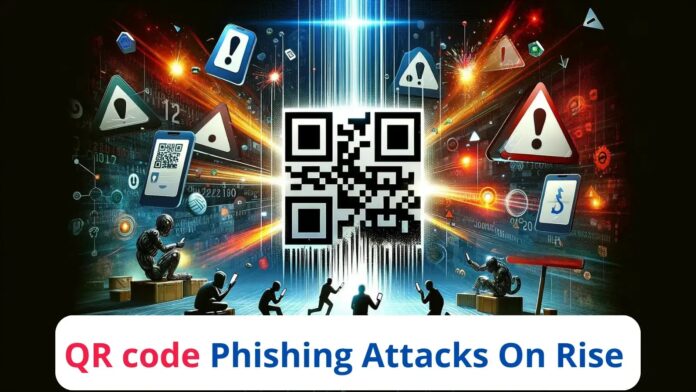[ad_1]
Phishing has been one of the primary methods threat actors use for impersonating individuals or brands with a sense of urgency that could result in private information being entered on a malicious URL.
Phishing has been set with several preventive measures that block any phishing email inside an organization.
However, with evolving technologies, threat actors have equipped themselves with the right tools that can help them evade any preventive mechanisms and prevent any individuals from giving up their confidential information. One of the latest techniques used by threat actors is Quishing or QR-based phishing.
Live attack simulation Webinar demonstrates various ways in which account takeover can happen and practices to protect your websites and APIs against ATO attacks.
QR-based Phishing Surges
There has been a big surge in Quishing attacks due to the evasion technique it offers and the success ratio. QRs have boomed in the last three years and are now used in several places, such as MFA, for viewing menus at restaurants, Wi-Fi password scanning, contactless payments, and several other purposes.
This makes QRs more dangerous than usual, as victims have low suspicions of malicious QR codes that can steal confidential information from the victim. Quishing is another important factor that makes it one of the biggest weapons in a threat actor’s arsenal.
When a user receives an email with a malicious QR, he/she scans the QR using their mobile phone, which brings them out of the organization’s security circle since no organization monitors personal mobile phones.
Scanning a malicious QR takes them to a malicious website that impersonates a Microsoft or Google login page, prompting them to enter their credential.
Since QRs have low suspicions among executives, users enter their credentials that provide the threat actor with a valid credential to an organization.
C-Suite Targeted High
Though any employee could be a target of a Quishing attack, researchers revealed that C-suite members such as chief executive officer (CEO), Chief financial officer (CFO), Chief operating officer (COO), and Chief information officer (CIO) were highly targeted due to the level of privilege and access they possess.
Non-C-Suite VIPs, such as executive vice presidents, senior vice presidents, and department heads, were also heavily targeted with Quishing attacks.
Suppose threat actors gain access to one of these high-level credentials. In that case, they can initiate an internal as well as an external fraudulent request that could target many employees inside an organization.
QR-based phishing attacks have been published by Abnormal Security, which provides detailed information about the attack vector, credential compromise, percentage ratio of targets, and other information.
Stay updated on Cybersecurity news, Whitepapers, and Infographics. Follow us on LinkedIn & Twitter.
[ad_2]
Source link
